- Home
- Neal Asher
The Warship Page 7
The Warship Read online
Page 7
The Client sent the required instruction and the boxes, with their twig-like structure, began to rearrange. Folding over and clumping into thick strands, they drew off to one side, there forming a large block. This shifted and compressed until it finally looked like an old tree stump. Now revealed, the contents of the packages bore their shape—orange segments, but ones seemingly drilled through with holes by big grubs. Moving in the spiders from their previous work, the Client assembled them—a process of matching segment against segment until their mechanisms locked them together. When she finally inserted the last one, the resulting ovoid jerked and turned, then numerous holes in it extruded pipes which interlocked all over its surface. The newly formed object did nothing, waiting for instructions and to be fed.
One of the spiders scuttled round the thing to find a data interface. The encoding system was somewhat at variance with what was generally found in the Polity, or the Kingdom, though there were examples. The spider extruded an interface of its own and began loading the program the Client had designed in the organic, molecular language of the Jain. It input detailed schematics of the weapons platform, required changes and upgrades. This took some minutes, not because the speed of transference was slow, but because the data package was immense.
Next the spiders returned to their hoses, reeling them out from their connection points to plug them into remaining holes in the device. Last to be plugged in was a superconducting power cable. And now it was time. The Client checked the furnaces and storage tanks all around the construction space. Molten metals, elementary dusts, gel-suspended powders and gases were ready. She opened up the taps, and the hoses jerked as they took pressure. The device emitted smoke as it heated up, with areas resembling some runic alphabet turning cherry red on its surface. Only one thing remained to do. She turned the power on.
The device shuddered, segmented and the pieces drew apart on an internal glare. Out of this shot glowing tendrils, spiralling around the power cable and the hoses, back to the walls and punching through beside them. Beyond the construction space, they tracked the cable and hoses to their sources from a fusion reactor, as well as the various storage tanks and furnaces. Within a minute, they began penetrating their control systems and the Client felt them falling from her grasp. This wasn’t in the programme, but she warily accepted it. With such an intelligent mechanism, though sub-AI, some degree of autonomy had to be expected.
Having secured its supplies, the device speared out further tendrils and spread them throughout the weapons platform. Using the schematic the Client had supplied, they took the most direct routes possible to their targets. First they reached the hardfield generators and began making alterations there, eating the cooling systems, stripping down the generators, rebuilding and integrating them in place. From there they branched into the hull armour. Patterns spread like growing lichen from the contact points, as the tech began to alter its meta-material structure. Superconducting links then engaged back from this into the hardfield generators. Soon all the generators were joined in a network. From this, tendrils speared back into the weapons platform to seek out the U-space drive and the gravity weapons—converting all into a coherent whole. This strange growth reached out to the other weapons too, reconstructing railguns, lasers and particle weapons. It wound intricately into the manufacturing processes of railgun slugs, energy supplies and storage . . . in fact, it radically altered most of the functions of the platform.
As the process continued, the Client reviewed the overall results of those changes with satisfaction. When this was all done she would be practically invulnerable, and it would be time to return to the fray.
ORLANDINE
Cloud like the cracked surface of a saltpan hung above, while in the distance, over the Canine Mountains, the sky was dark brown and lit with red lightning flashes. Orlandine, EMR engaged with her whole self, spread around the world, mapped the weather system. She saw that the storm would linger in the mountains for a few hours before dropping down to the city. There it would stay, probably for a few days. Rain would be heavy and likely there would be hailstone damage, but nothing that automatics couldn’t handle.
This evening would have been a perfect time for lingering in her apartment with Tobias, enjoying human time and watching the light show. On Jaskor, the storms often generated ball lightning and St. Elmo’s fire around the taller buildings. They could have sat out on the balcony with the curved chain-glass screen down, sipping wine. But since her venture to the Ghost Drive Facility, and subsequent virtual encounter with Earth Central, the idea of human time felt like an indulgence. She propelled her shuttle up through the layer of cloud, and over the chocolate swirl of the storm cell in which it seemed an incendiary battle was occurring.
Off to one side of this, the sky was clear over the ocean. Here she gazed upon a ring of islands, the last one of which glowed red at its core. It was called Sambre, after some ancient battle—named by the history buff volcanologist who lived and studied there. Sambre hadn’t existed when she first came here. The island had sprung up over the last hundred years and was still growing. She briefly checked sensors down there to ensure the slow boil of island formation did not portend anything dangerous, then pondered how her life had now moved into geological time.
Sky faded in wraiths of vapour as she continued up, and stars lit in a brown-red haze that slowly dispersed. Satellites became visible to the naked human eye and the platform under construction out here expanded. She noticed a maintenance crew working on one of the satellites. A brief inspection of the schedules and logistics of her project informed her that the crew had arrived early to swap out a supercapacitor showing signs of failure. She was glad of their diligence, since this satellite was one of her own—it contained a downlink to the Ghost Drive Facility and in its storage some portion of her mind.
Cruising further out, she sent instructions to detach a hemispherical vessel from a factory complex beyond the weapons platform, and then to bring it towards her. Her new ship was under construction in the factory but would not be ready for a while —this would have to do.
“I am redundant before I am built,” observed the weapons platform AI, Magus, behind her.
“I am sure you will have plenty to keep you busy,” Orlandine replied. “It will be some time before the black hole reaches the centre of the disc, and meanwhile it is stirring things up in there.”
“I saw—two Jain-tech excursions in the last week.” The AI pondered for a second. “Even so, they were minor, and all platform AIs must start thinking about their future.”
“There is still that twenty per cent chance . . .” Orlandine noted.
“That the inactive star will ignite, yes, I know.”
Nothing more needed to be said about that. If the star ignited, it would blow Jain tech out into the galaxy. They would spend centuries tracking it down and destroying it, but even the most optimistic estimates were that they would get only forty per cent of it. Earth Central would necessarily fortify planetary systems and limit interstellar travel. This alone it predicted would lead to the break-up of the Polity. Just one Jain node in the wrong hands—or claws if it arrived in the Prador Kingdom—and disaster was sure to ensue. Perhaps this, in the end, had been the Wheel’s aim.
“We’ll worry about that should it happen,” she said. “It’s not as if we can stop it now.” She paused then asked, even though she knew, “How long before you are commissioned?”
“One month solstan,” said the AI, “though I fail to understand why human technicians are here checking my interlinks.”
“Don’t be grouchy,” she replied, her mind straying elsewhere. She felt that if she kept looking at such details she would lose sight of the project overall. Yes, before, when she had been suspicious of Dragon, she had checked those details. Now she needed to see the whole, and how it related to the amorphous sense of danger she had felt since her talk with EC.
The hemisphere ship moved in towards her, tipping up its flat face to expose th
e recess perfectly shaped to take her shuttle. She drew closer and closer, finally docking with a sound, transmitted through the structure around her, as of an oyster being opened. Orlandine detached and, as she pulled herself to the sealed door, altered her body. The hemisphere ship was of a simple design, hurriedly manufactured to her requirements. It contained a U-space drive, powerful U-com, fusion reactor and drive, steering and hard computing about an interface sphere. Life support was not a necessity.
Breaking the seal on the door had all the air rushing out, and membranes closed across her ears and over her eyes. A layer exuded by her skin protected it from evaporation in hard vacuum. Another substance released from her lips sealed them together. The same seal operated in her anus and vagina, and in her ears and nostrils, when she pulled them closed. Most of what she was doing an outlinker could do, those humans adapted to live in vacuum and usually residents of one of the Polity Line stations. However, she could exist like this for a lot longer and did not have the zero-gravity weakness one of their kind possessed. She opened the door and propelled herself into the ship, aware of how quickly after human time she had stepped so far away from it again.
Towing herself through the open framework structure within the ship, she zeroed in on the interface sphere, hanging like a pinned bug at the intersection of structural members. Transmitting ahead, she opened its hatch, and after a kick against a strut, sailed neatly across and dropped inside. A touch to the disc on her shoulder retracted the shipsuit to it, and she pulled herself down into the chair, strapped in and opened up. How would Tobias feel if he saw her like this? With her sides open and the data plugs going in, the power bayonet stabbing into her spinal power socket and her eyes turning blind white and gridding over? He knew what she was, but she gave him few visual cues to its reality. How did she feel about what she was?
This key question lay at the heart of her taking human time. Some argued that being a haiman was a half measure—a denial of the next stage of human evolution, which was to go full AI, and an antediluvian attachment to the idea of the human soul. Artificial intelligence could own everything humans claimed in the way of emotion, imagination . . . in fact all those mental attributes once considered unique to organic beings. They could be so much more. And the soul, she knew, simply did not exist. So why human time? Why her perpetual return to it? Sometimes she thought it was because, with the Jain tech inside her, she felt even more distant from humanity than a Polity AI. But at last she was beginning to realize that she had locked herself in circular reasoning. Human time had been a tradition among the haimans she had worked with on the Dyson sphere a long time ago. It became a question to her later. And now she entered it to try to find the answer to why she entered it. Perhaps the time had come for her make a choice, and thus break that circle.
With the interface sphere closed and full connection established, Orlandine’s awareness of her body did not recede but rather was swamped by other data. Omniscient, she gazed upon all she had wrought, and then with a thought dropped her temporary ship into U-space. Just a few minutes later, she bounced out over a gas giant and observed the mining operations and factories on its moons. Here she had built the runcible gates used to transport the Harding black hole to the accretion disc. Now the operation was winding down. Big haulers were on the moons where the factories and mining operations were being broken up—they had only been at this place because she had thought they needed to be concealed. Though apparently EC had known about her project all along. Many of the operations here could be moved in-system for convenience, while some would stay only because one of the moons possessed rare and useful elements.
“How goes it?” she enquired, remembering her last time here and how she had been lit up by targeting lasers from the irascible crew of war drones currently at work down there.
“Should have it all clear in a week or two,” replied the assassin drone Knobbler. He was down on the surface—an amalgam of squid, hoverfly and bulldozer, squatting on a sulphurous mound. He watched as other drones dismantled a big drilling rig cum pumping station that had been sucking up part of the interior ocean of the moon.
“Any problems?” interjected another.
The war drone Cutter—a giant praying mantis seemingly fashioned of razor blades—was operating a treaded surface hauler. This was towing a factory unit that separated water, bottled the oxygen as liquid and used hyperdiamond anvils to compress the hydrogen until it turned into a metal. This last had been a large component in the meta-materials they had used to fashion the strong runcibles.
“There might be,” Orlandine replied, aware that Cutter had not asked out of concern but because, as usual, he was bored and wanted some action.
Other drones chipped in and she found herself conducting multiple conversations. She injected her recent conversation with Earth Central into this exchange and they abruptly fell silent as they all cogitated on this . . . for a whole twenty seconds. Fast exchanges then ensued between them all and Knobbler—generally he was their spokesperson.
“We already noted the anomalies about the soldier,” said Knobbler. “When you can point out and deride the idiotic tactical decisions of something powerful enough to chew up weapons platforms, you know that something stinks.”
“And you did not see fit to discuss this with me?”
“We sort of assumed you knew.”
Orlandine felt something niggling at her mind. It was from the human in her and it was embarrassment. She should have seen all this; now she analysed why she had not. When she slipped into what Cutter had described as uber-human mode, when her mentality had been mostly engaged through the Jain tech, the focus of her awareness had been . . . different. Would she have noticed it if she had been more human or more focused through her Polity AI element? She did not know.
“Give me your assessment,” she instructed, more to cover her confusion than because she wanted it.
“The Wheel wanted you to deploy the Harding black hole before you found out, most likely from Dragon, that this was not a good idea,” said Knobbler.
It was her and Earth Central’s assessment too. It was the logical convergence of all that had happened, but beyond that point an endless array of possibilities opened out. Perhaps some error or some phenomena she did not know would lead to the black hole actually detonating the sun. Or had the Wheel simply wanted her to destroy the Jain tech? Perhaps its plans involved the Harding system sans the black hole and had nothing to do with the accretion disc. Perhaps the soldier, formidable as it was, had just been stupid. Perhaps the Wheel was just insane and operating without purpose. But where could it be now?
“Related anomalies?” she asked.
“Outside those already discussed?” Knobbler enquired.
“Yes.”
“The math concerning the inactive star in the disc is open to inter- pretation—it is an anomaly itself.”
“Explain.”
“It could be a proto-star close to the point of ignition, or it could be a star whose fusion has been suppressed by an entropic drain.”
Orlandine nodded to herself. If it was the last of these, the black hole would break that drain and the star could go either way. It could explode back into life, briefly, before the black hole ate it. But that would be enough to spread the accretion disc. Or it would simply collapse into the black hole with little fuss.
“An entropic drain could be a problem . . .”
“It could be,” Knobbler agreed, “and perfect for the Wheel to take advantage of. But we both know that such a drain would be no natural phenomenon and we’d have to ask who put it there and why.”
Orlandine waved a dismissive hand, then was annoyed at having made such a human gesture. “This is all highly theoretical and fanciful. Any other anomalies?”
Knobbler shrugged his heavy body. “U-space phenomena out here— the possibility that something arrived, or shadow effects from when we moved the runcibles. Beyond that I can think of nothing else.”
“I will
return to Jaskor,” said Orlandine, not sure where her sudden urgency to do so came from.
“And perhaps,” said Knobbler, “we should take a much closer look at that star, rather than everything that surrounds it.”
“Perhaps.”
The old drone added, “Don’t dismiss the theoretical and the fanciful, Orlandine—that is the territory we are in.”
Orlandine turned her ship around and made the required calculations to take her back to Jaskor. Another unnerving conversation which opened up a host of disastrous possibilities. Why did she feel she was losing her grip on something?
TOBIAS
Acrate stood open on the warehouse floor. Fraser was gazing into it with curiosity while Enida, who had once been Tobias’s lover, stood to one side, holding up and inspecting one of the bombs. The thing glinted with a strange iridescence—a meta-material that apparently rendered it invisible to many forms of scanning. It was about the size of a grenade from some ancient war on Earth. Its punch, with Polity technology, could be anything up to that of a tactical nuke from back then. But Tobias wasn’t convinced it was Polity technology. The grenades were nested in a material similar to the one the weapon in his pocket had come in.
“So what’s all this about, Tobias?” Enida asked.
Tobias concentrated on her. At least with her as his focus, he could suppress the urge to look up at the nightmare waiting in the rafters of the warehouse.
“You’ll find out soon enough,” he replied, pretending a confidence that had fled him long since.
They were all here: nine of his key people and all with access to critical areas of the infrastructure Orlandine had built up around Jaskor. Enida was a technician who worked in the runcible facility here, while Fraser supervised construction in some areas of the weapons platform being built above. Others had access to orbital factories and ground facilities, the shipyard and various satellites, while two had been sent from the south by Mayor Ransom. They had access to the new runcibles that had been erected there. Tobias wanted to tell her this was about the start of the revolution, that soon they would be out from underneath the heel of AI oppressors and reclaiming their world. But he didn’t believe that any more, because these nine were the last of many Cad had selected and ordered him to bring here.

 The Bosch: A Novella (Polity Universe)
The Bosch: A Novella (Polity Universe)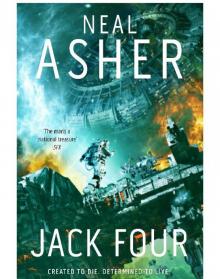 Jack Four
Jack Four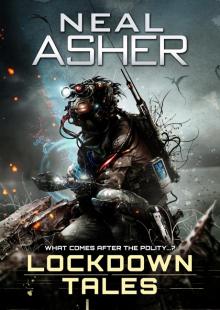 Lockdown Tales
Lockdown Tales The Warship
The Warship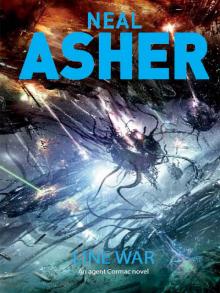 Line War
Line War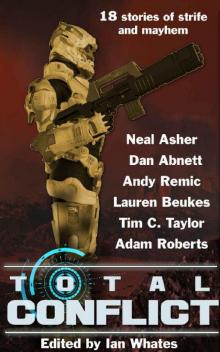 Total Conflict
Total Conflict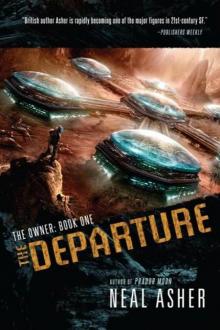 The Departure
The Departure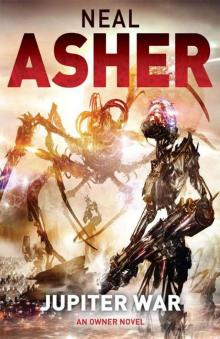 Owner 03 - Jupiter War
Owner 03 - Jupiter War Polity Agent
Polity Agent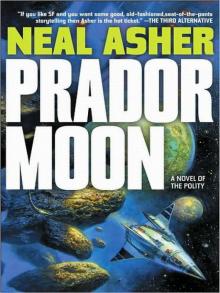 Prador Moon
Prador Moon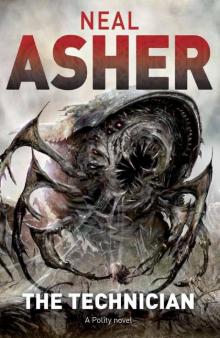 The Technician
The Technician Hilldiggers
Hilldiggers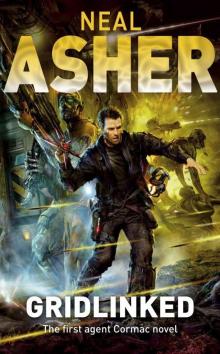 Gridlinked
Gridlinked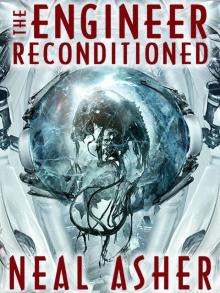 The Engineer ReConditioned
The Engineer ReConditioned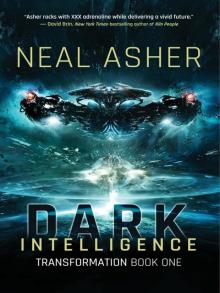 Dark Intelligence
Dark Intelligence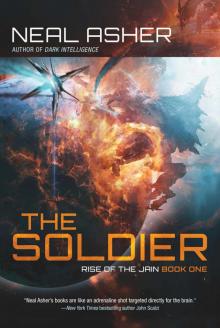 The Soldier: Rise of the Jain, Book One
The Soldier: Rise of the Jain, Book One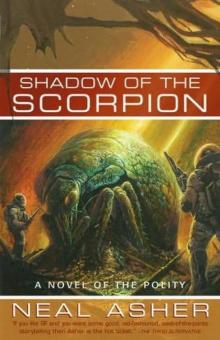 Shadow of the Scorpion p-2
Shadow of the Scorpion p-2 The Skinner
The Skinner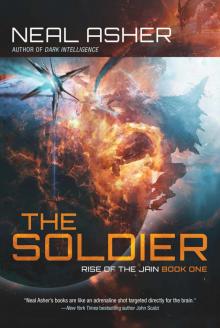 The Soldier
The Soldier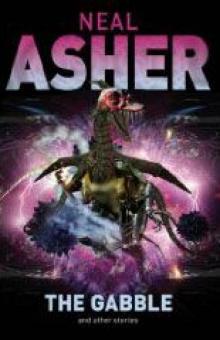 The Gabble p-13
The Gabble p-13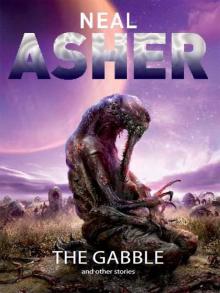 The Gabble and Other Stories
The Gabble and Other Stories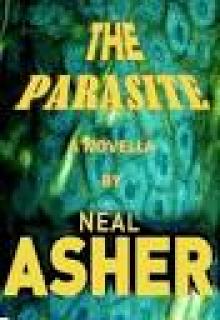 The Parasite
The Parasite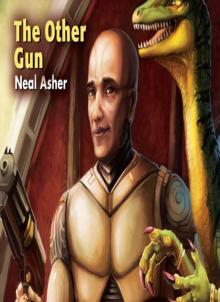 The Other Gun
The Other Gun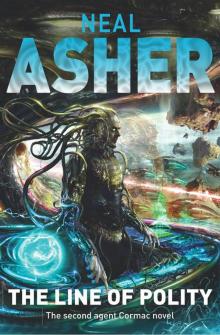 The Line of Polity
The Line of Polity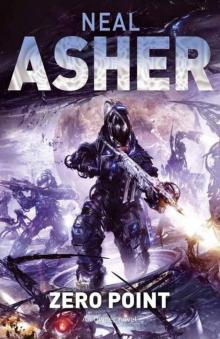 Zero Point (Owner Trilogy 2)
Zero Point (Owner Trilogy 2)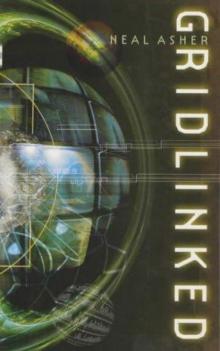 Gridlinked ac-1
Gridlinked ac-1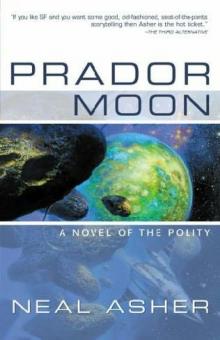 Prador Moon p-1
Prador Moon p-1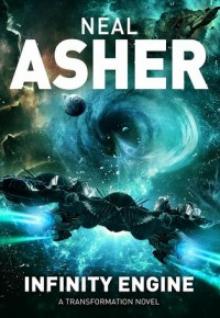 Infinity Engine
Infinity Engine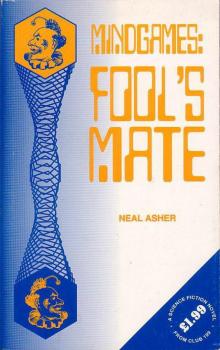 Mindgames: Fool's Mate
Mindgames: Fool's Mate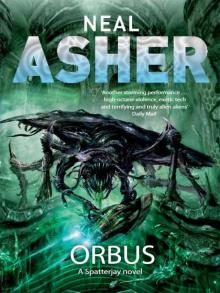 Orbus
Orbus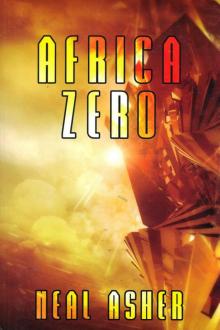 Africa Zero
Africa Zero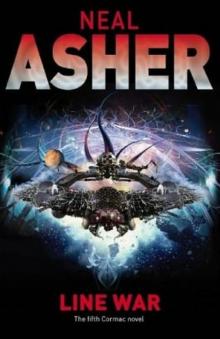 Line War ac-5
Line War ac-5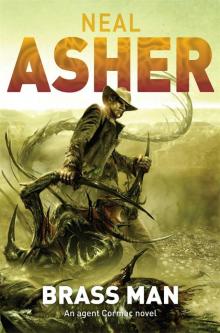 Brass Man
Brass Man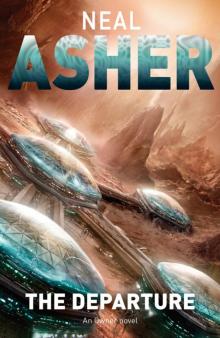 The Departure to-1
The Departure to-1 Cowl
Cowl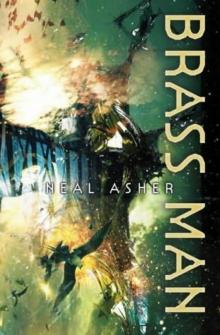 Brass Man ac-3
Brass Man ac-3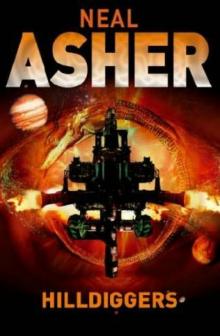 Hilldiggers (polity)
Hilldiggers (polity)![Greg Bear - [Eon Trilogy 1] - Eon (rescan) (v1.0) Read online](http://i1.bookreadfree.com/i2/04/08/greg_bear_-_eon_trilogy_1_-_eon_rescan_v1_0_preview.jpg) Greg Bear - [Eon Trilogy 1] - Eon (rescan) (v1.0)
Greg Bear - [Eon Trilogy 1] - Eon (rescan) (v1.0)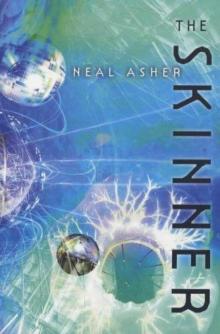 The Skinner s-1
The Skinner s-1 The Voyage of the Sable Keech s-2
The Voyage of the Sable Keech s-2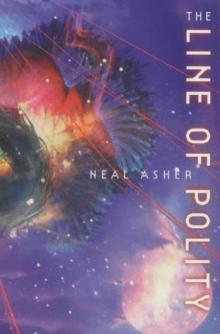 The Line of Polity ac-2
The Line of Polity ac-2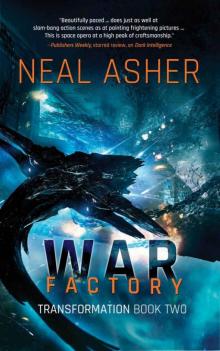 War Factory: Transformations Book Two
War Factory: Transformations Book Two Polity Agent ac-4
Polity Agent ac-4